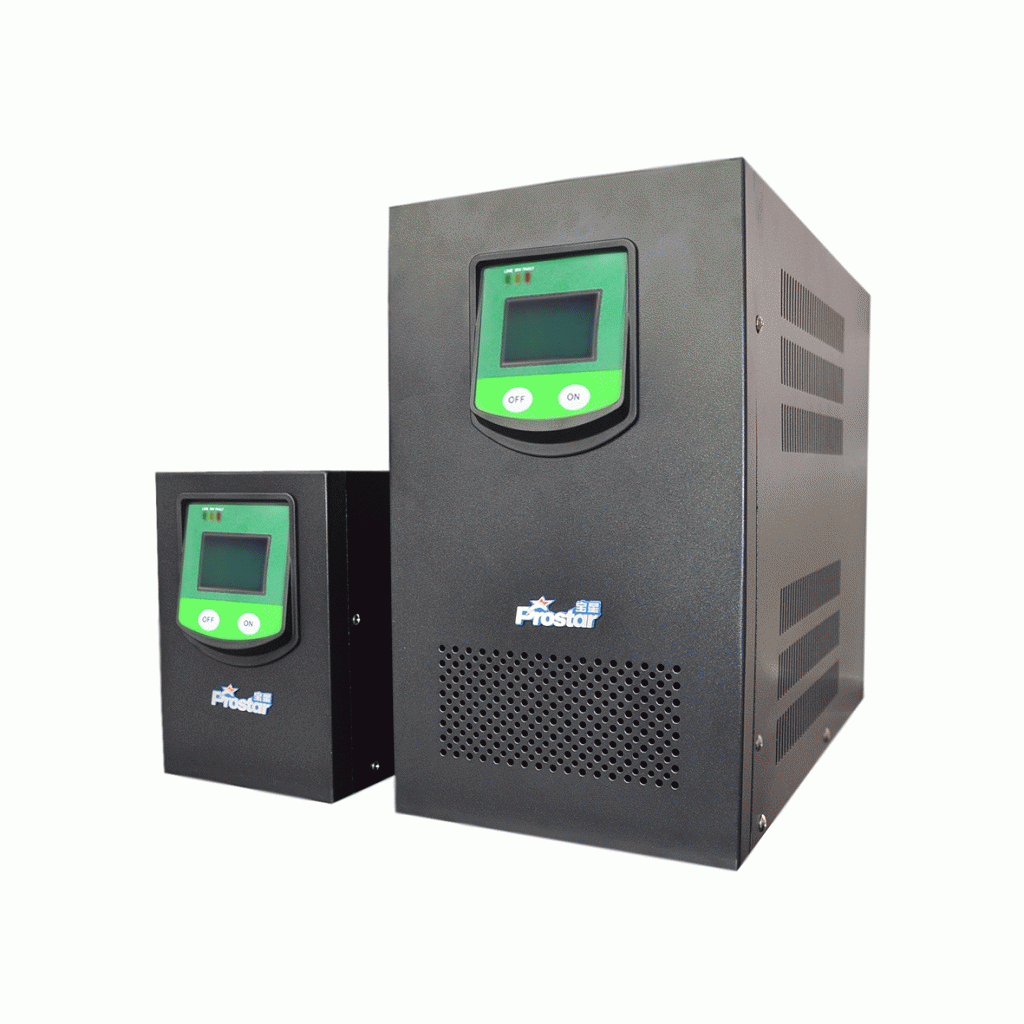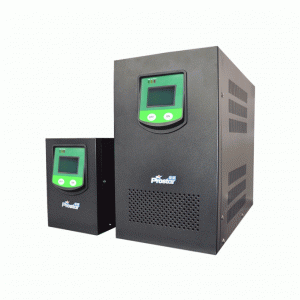By Olatunji Adetunji
An inverter is a device that converts the solar power energy of the sun that has been created by the electrons in the silicon panel direct current (DC) into alternating current (AC); the converted AC can be at any required voltage and frequency with the use of appropriate transformers, switching, and control circuits. An inverter is essentially the opposite of a rectifier.
Static inverters have no moving parts and are used in a wide range of applications, from small switching power supplies in computers, to large electric utility high-voltage direct current applications that transport bulk power. Inverters are commonly used to supply AC power from DC sources such as solar panels or batteries.
The electrical inverter is a high-power electronic oscillator. It is so named because the early mechanical AC to DC converter was made to work in reverse, and thus was “inverted”, to convert DC to AC.
Inverters are sometimes confused as UPS; UPS stands for “Uninterrupted Power Supply” which means that it transfers power cut off to battery in fractions of milliseconds, and does not let the computer go off.
The inverter simply converts the DC Voltage into AC power, and is used in home appliances to give power back up. But it transfers the power backup to battery backup much slower than a UPS. You cannot use it for computers, if you will use it your computer will have to restart automatically in a moment.
The basic difference in layman’s terms:
While both provide backup power during mains outage, with the UPS the switch is instantaneous whereas with the inverter there is a gap of a second or two. This gap is OK for household gadgets such as lights, fans, fridge, etc. but not OK for computers.
In technical terms:
UPS: The mains power comes to the UPS. The AC is converted to DC and this DC is constantly charging the battery. The output of the battery is fed to the Sine wave inverter and it converts DC to AC and this feeds the equipment. Since power out is always drawn from the battery, there is no time lag when mains switches off; it just stops the battery from being charged and the UPS continues to supply power till the battery runs out.
Inverter: The main power comes to the inverter. This is directly sent to the output but the AC is also converted to DC and this DC is constantly charging the battery. A sensor and relay mechanism checks whether the mains is ON or OFF. When the main switches OFF, the relay actuator triggers to switch from mains to inverter. Rest is same like the UPS. Because of this sensor and relay, there is a gap between triggering.
Added to that, the UPS involves more costly circuitry and is therefore more expensive to make and sell.
There are some inverters that can produce pure sine waves AC; with pure sine wave it can reduce chances that the inverter might damage the complex electronic circuitry of the computer and these inverters are called online UPS and they are very costly compared to normal sine wave inverters. They give a zero delay in switch over, more like a swift over.
UPS and Inverter Review
The UPS broadly consists of:
1. Rectifier (Charger) – To convert AC Power (from Power Grid) to DC Power (to charge Battery)
2. Inverter – To convert DC Power (from Battery) to AC Power (to power load i.e., electrical and electronic equipment.)
3. Controller – To control functions of Rectifier (Charger) and Inverter. (i.e., when to start or stop charging battery, when to start or stop power from battery to load, how fast to change from Grid Power to Battery Power and so on)
An Inverter broadly consists of:
1. Inverter – To convert DC Power (from Battery) to AC Power (to power load i.e., electrical and electronic equipment.)
2. Controller – To control functions of inverter. (i.e., when to start or stop power from battery to load and so on)
Inverters are usually used with Solar Photovoltaic Cells/Modules (Solar Panels) or Windmills, which directly generate DC Power to charge batteries and therefore no Rectifiers, are required.
Batteries can be directly charged via Battery Chargers. Typically, hawkers in India use inverters to power light sources. At the end of the day, they take their batteries for charging.
Notes:
1. Change over time from Grid Power to Battery Power is typically set to less than 10 milliseconds to avoid sensitive electronic equipment and computers from rebooting. As change over time is set in Controller, both UPS and Inverters can run sensitive electronic equipment and computers.
2. DC Power from Battery is converted to AC Power for load in either Pure Sine (Sinusoidal) Wave (Waveform) or Modified Sine Wave. Pure Sine Wave is ideal and recommended for increasing life of electrical and electronic equipment and is a must for sensitive electronic equipment. Modified Sine Wave damages electrical and electronic equipment over a period of time and generates humming noise from load during operation. Both UPS and inverters can generate either Pure Sine Wave or Modified Sine Wave.
TYPES OF INVERTERS
Solar inverters
A solar inverter, or PV inverter, converts the variable direct current (DC) output of a photovoltaic solar panel into a utility frequency alternating current (AC) that can be fed into a commercial electrical grid or used by a local, off-grid electrical network. It is a critical component in a photovoltaic system, allowing the use of ordinary commercial appliances. Solar inverters have special functions adapted for use with photovoltaic arrays, including maximum power point tracking and anti-islanding protection.
Solar micro-inverter
Several companies have begun embedding electronics into PV modules. This enables performing maximum power point tracking (MPPT) for each module individually, and the measurement of performance data for monitoring and fault detection at module level. Some of these solutions make use of power optimizers, a DC-to-DC converter technology developed to maximize the power harvest from solar photovoltaic systems. As of about 2010, such electronics can also compensate for shading effects, wherein a shadow falling across a section of a panel causes the electrical output of one or more strings of cells in the panel to fall to zero, but not having the output of the entire panel fall to zero.
Olatunji Adetunji is an SEO specialist working with SEO Web Analyst® , a SEO consulting firm providing affordable seo services and free training on seo web marketing techniques and trainings.



